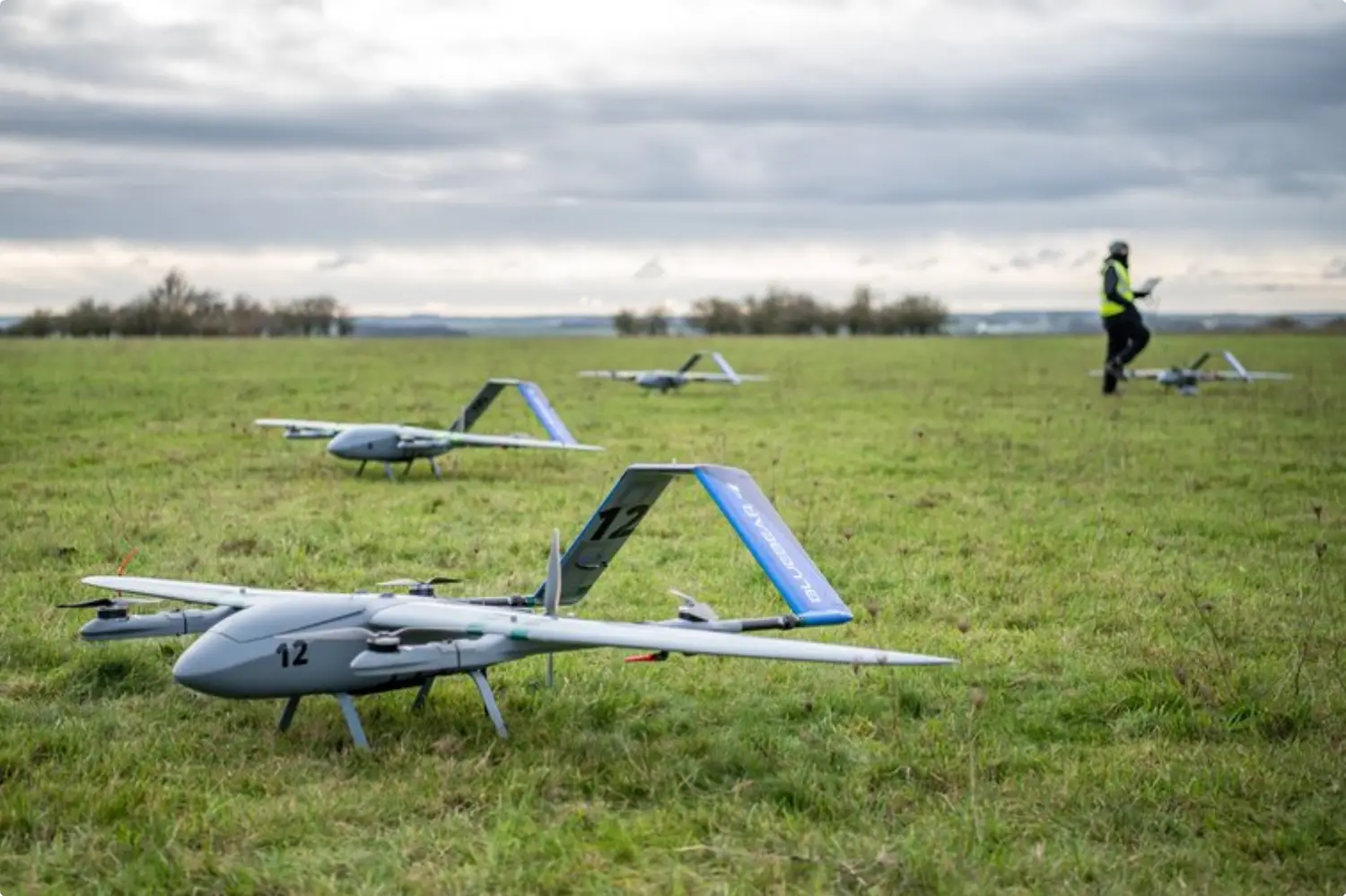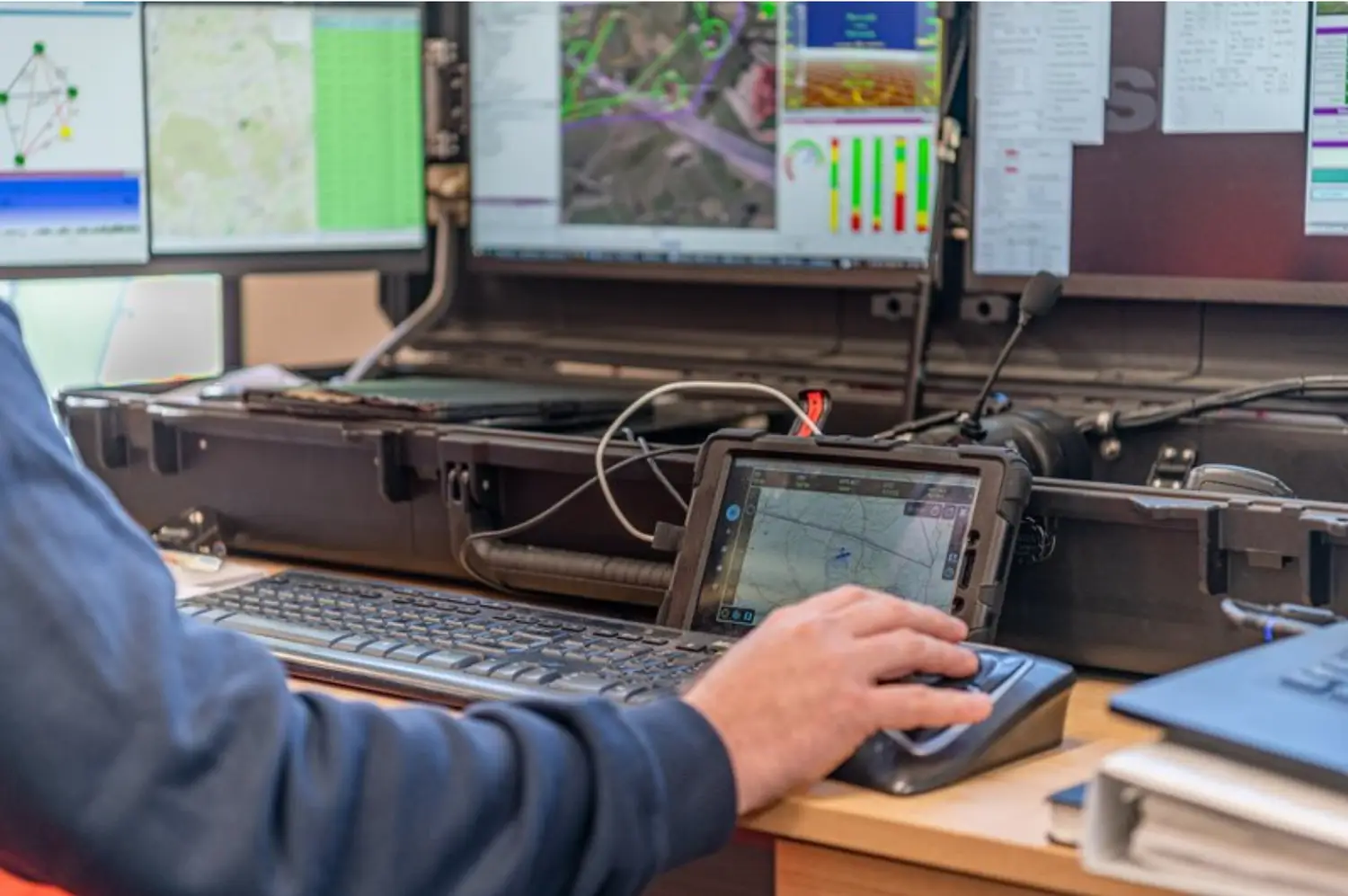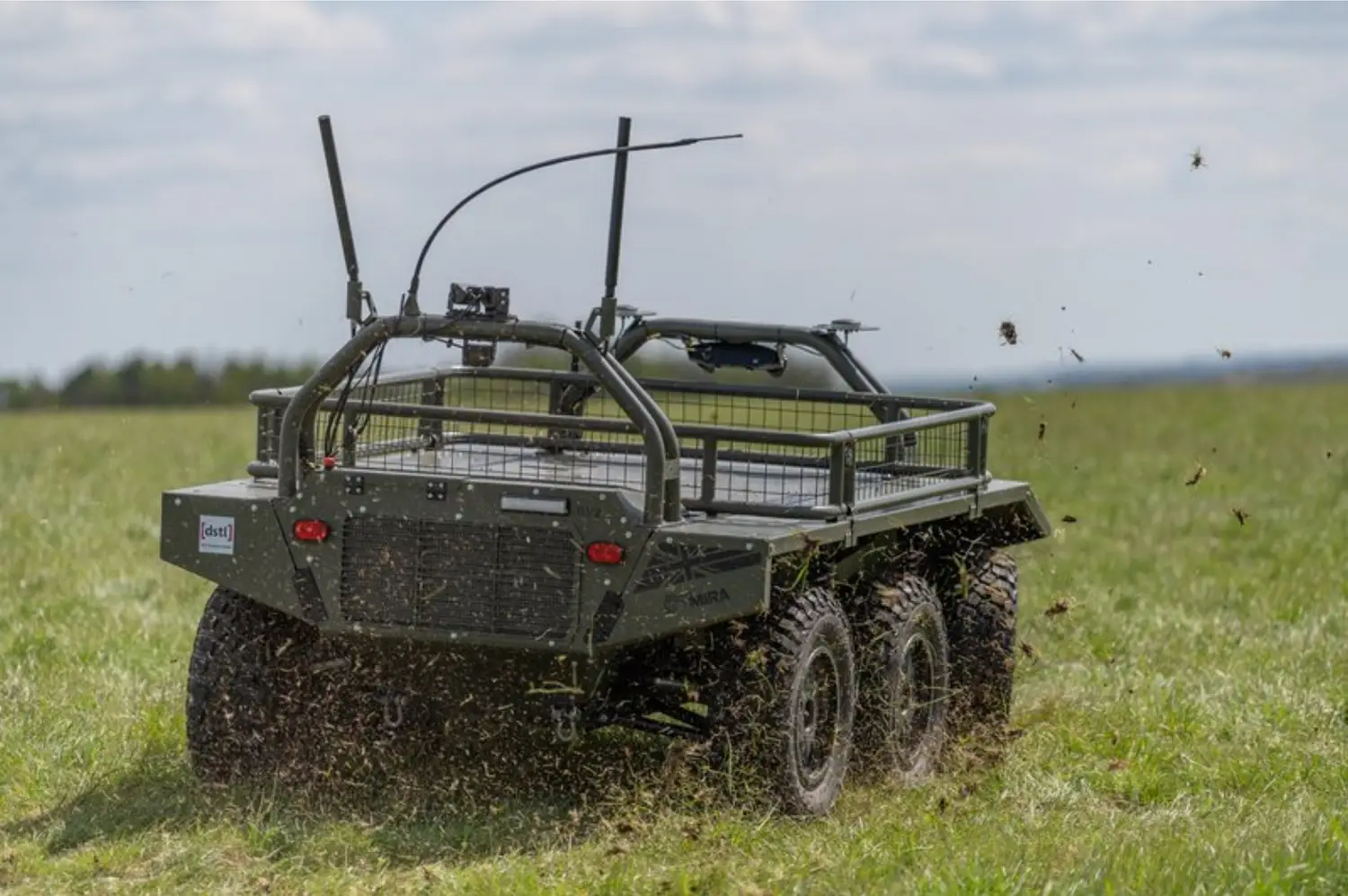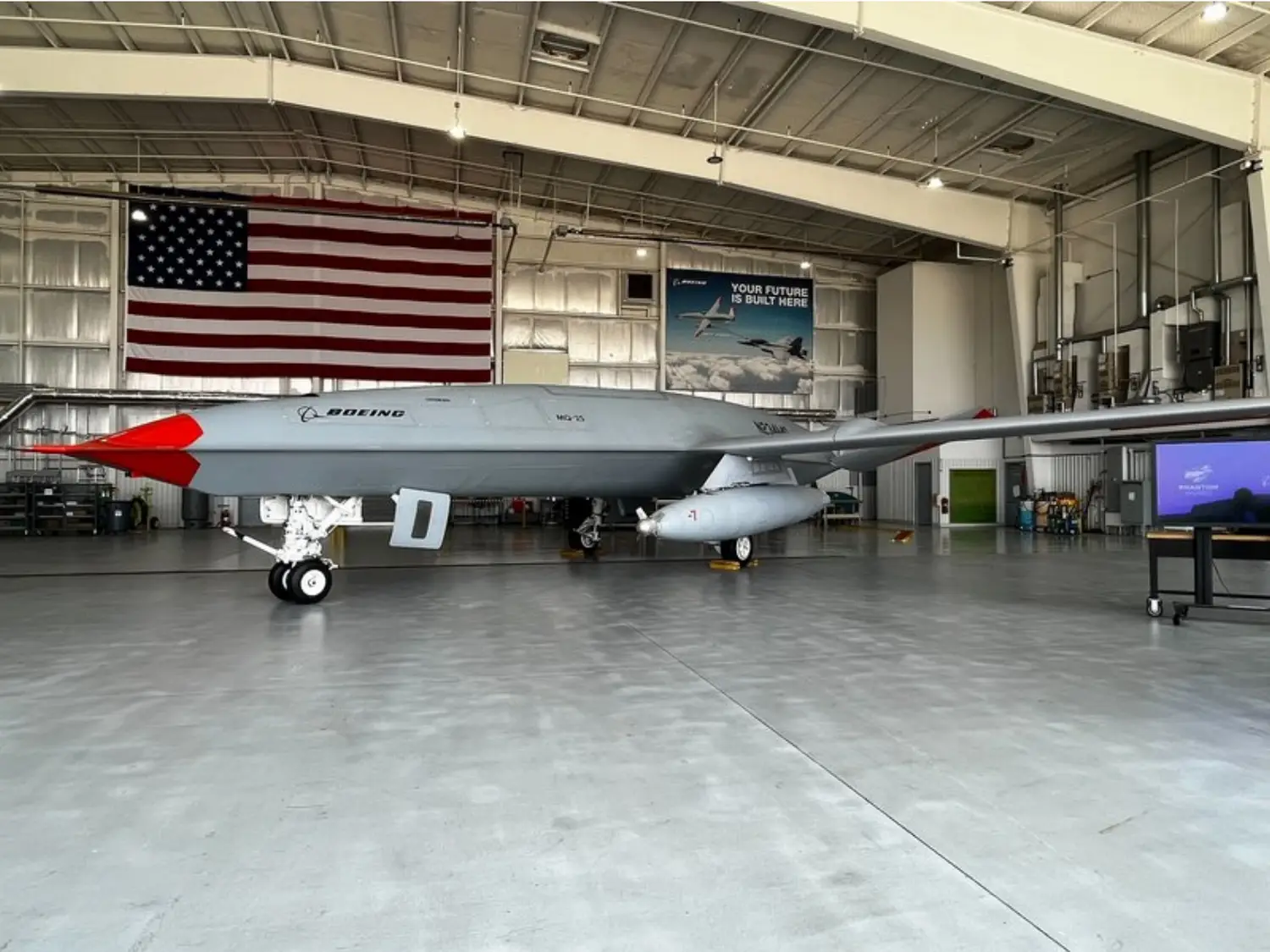
REPORT HOME > News
JUNE 2023 | technology report | UAS
by Harry Lye
While for most part AUKUS is about submarines, under its Advanced Capabilities Pillar, known as Pillar 2, the UK, US and Australia are collaborating on other leading-edge technologies.
Above: The trial saw the use of a number of UAVs, including Blue Bear's Ghost. (Photo: UK MoD/Crown Copyright)
In April, the UK hosted the first AI and autonomy trial under the AUKUS agreement at Upavon, designed to drive forward the technologies into responsible military use rapidly.
The trial saw the initial joint deployment of Australian, UK and US AI-enabled assets in a real-time collaborative swarm to detect and track military targets in a representative environment.
The acceleration of AI and autonomous technologies are slated to have a major impact on coalition military capability.
RELATED ARTICLES
How artificial intelligence can threaten military readiness
Australia’s pathway to AUKUS submarines is attended by risk
SOF Week 2023: How Collaborative Autonomy can revolutionise multi-domain missions
Organised by the UK's Defence Science and Technology Laboratory the trial achieved the retraining of models in flight and the interchange of AI models between the AUKUS nations.
UK Deputy Chief of Defence Staff, Military Capability, Lt Gen Rob Magowan, said: 'This trial demonstrates the military advantage of AUKUS advanced capabilities, as we work in coalition to identify, track and counter potential adversaries from a greater distance and with greater speed.
'Service personnel, scientists and engineers from our three nations combined to develop and share critical information to enhance commanders' decision-making.'
The AUKUS Advanced Capabilities Pillar is a trilateral programme of work looking at leading-edge technologies such as AI and autonomy, among others.
Under this less publicised Pillar 2, the trio have collaborated on accelerating a collective understanding of AI and autonomy technologies and how to field robust solutions in complex operations while adhering to shared views on the safe and responsible use of AI.
Above: Under Pillar 2, the AUKUS nations are exploring the military utility of advanced technologies. (Photo: UK MoD/Crown Copyright)
Magowan added: 'Accelerating technological advances will deliver the operational advantages necessary to defeat current and future threats across the battlespace.
'We are committed to collaborating with partners to ensure that we achieve this while also promoting the responsible development and deployment of AI.'
By sharing AI and enabling technologies, Australia, the US, and UK believe they can access the best solutions, reduce duplication of efforts and ensure future interoperability.
The trio sees adapting technologies at pace as vital to maintaining an operational advantage over adversaries.
US senior advisor to the Secretary of Defense for AUKUS, Abe Denmark, said: 'We recognise the immense importance of this collaboration in strengthening our collective national security of our nations.
'The development and deployment of advanced artificial intelligence technologies have the potential to transform the way we approach defence and security challenges.'
Denmark added that the demonstration was a 'critical step' in the collective's initiative to stay ahead of emerging threats.
The trial employed a variety of air and ground vehicles to test target identification capabilities, including UK Blue Bear Ghost and Australian Boeing-Insitu CT220 UAVs.
Land vehicles included a Challenger 2 MBT, Warrior IFV, a Viking UGV, a commercially hired FV433 Abbot self-propelled gun and a BMP OT-90.
Above: A Viking UGV pictured during the AUKUS capability demonstration. (Photo: UK MoD/ Crown Copyright)
Trilateral teams worked together to develop joint machine learning (ML) models and fly them on different nations' UAVs.
These models were updated to include new targets and retrained to meet developing mission requirements.
Australian Deputy Secretary, Strategy, Policy and Industry, Hugh Jeffrey, said: 'The AUKUS AI and autonomy trial in Salisbury Plain demonstrated AI algorithms working in a mission-tailored adaptive capability.
'The AUKUS research and operator teams collaborated to develop, test and evaluate joint machine-learning models, and operate our different national platforms on the battlefield.'
Outside of Dstl, the trial also saw the participation of the UK Defence Artificial Intelligence Centre (DAIC), US Air Force Research Laboratory (AFRL), US Army Combat Capabilities Development Command (DEVCOM) Ground Vehicle Systems Center (GVSC), US Office of The Under Secretary of Defense for Research and Engineering (OUSD R&E), Australia Defence Science and Technology Group (DSTG) and Frazer-Nash Consultancy.
Jeffrey added: 'I was impressed to see AI models rapidly updated at the tactical edge to incorporate new targets, which were immediately shared among the three partners to deliver decision advantage and meet changing mission requirements.
'This cooperation under AUKUS Pillar 2 will deliver a capability greater than any one country could achieve alone, and this really is the rationale for the AUKUS partnership at work.'
Next article below > MQ-28 Ghost Bat ‘could fit the bill’ for UK's Loyal Wingman capability needs, says Boeing
JUNE 2023 | technology report | UAS
by Norbert Neumann
The affordability of the MQ-28A Ghost Bat will play a crucial role in determining its suitability for the UK's defence needs. With studies under way to determine the affordability threshold, discussions also focus on the contribution this capability could make to the domestic industrial base.
Above: The Boeing MQ-28 Ghost Bat has been publicly displayed in the US for the first time. (Photo: author)
Discussions are taking place to see whether the Boeing Defence Australia/Phantom Works MQ-28A Ghost Bat UAS could fit the UK’s loyal wingman capability, Boeing told Shephard at MidAmerica St Louis Airport on 25 May, where the aircraft was publicly showcased in the US for the first time.
The UK launched its post-Mosquito combat drone project last November, shortly after scrapping the original programme in June.
The initiative is part of a follow-on effort to the Lightweight Affordable Novel Combat Aircraft (LANCA) programme and is carrying out an industry engagement effort to develop a low-cost UAS.
RELATED ARTICLES
US Navy gears up for first MQ-25 EMD delivery and new flight tests
Canberra promises to multiply MQ-28A Ghost Bats
Keeping prices low for the UK’s relatively modest available budget will be crucial and will determine whether the RAF can get its hands on the Ghost Bat.
When asked if the Ghost Bat could fit the bill to fill the UK’s requirement, Boeing autonomous collaborative platforms director Krystle Carr said: ‘From the conversations that I’ve had, I think that it could. It depends on the numbers.’
She said her understanding is that studies are currently under way in the UK to establish what the affordability threshold is for the capability.
‘They will come out with what they think is an appropriate value proposition for a platform such as this,’ Carr added.
Until these studies are made public, it is hard to say whether the MQ-28A could be a potential solution for the LANCA requirement.
It is similarly difficult to approach the question from a capability perspective as Boeing Defence Australia, Phantom Works and the RAAF remain tight-lipped on the abilities of the UAS.
The UK MoD said last year that the industry engagement would particularly interest companies specialising in UAS design and manufacture propulsion, system integration, navigation, communication, EW payloads, autonomy, C2, airworthiness and certification.
Carr said discussions also include how the capability could contribute to the domestic industrial base.
‘That is part of the ongoing conversations,’ she said. ‘Once they finish their ops analysis on what they want and what the price point is, then it comes down to the industrial participation that would be required.’
This will undoubtedly be a crucial factor for the MoD as it is in most of its significant new programmes, such as the New Medium Helicopter (NMH) and the Global Combat Air Programme (GCAP).
The MQ-28A Ghost Bat was designed as a multirole system to escort crewed aircraft.
Boeing Defence Australia, Phantom Works and the RAAF began development in 2013, and the aircraft took its first flight in February 2021.
Above: The MQ-25 Stingray has not yet conducted test flights from aircraft carriers. (Photo: author)
The Ghost Bat was previously referred to as the Airpower Teaming System (ATS) or the 'Loyal Wingman'.
The Australian government has invested in the system, and several other air arms are interested, such as the USAF potentially including it in its nascent Collaboration Combat Aircraft (CCA) programme.
Carr could not answer how a potential US decision to procure Ghost Bats would affect the price it could be offered at to the UK, but she said it would have to be a trilateral agreement, not dissimilar to AUKUS.
The MQ-28A is still in early development with a low production rate.
During the briefing, company representatives said the Ghost Bat was shipped to the St Louis facility and not flown, with the purpose of carrying out a series of tests, but they declined to elaborate on the nature of these.
It is unclear how many Ghost Bats are in production, or the number of completed airframes.
MQ-25
During the St Louis site tour, Boeing officials also gave an update on the MQ-25 Stingray production.
Boeing has struggled to develop a production line and achieve production maturity for the aircraft, resulting in the IOC being pushed back– the current date is 2026.
Erika Hankel, deputy programme manager for the MQ-25, could not say when the first aircraft's delivery will occur.
When asked how much progress Boeing has made on resolving the production challenges, the company’s VP and GM for air dominance Steve Nordlund said: ‘It’s going well.’
‘We all go through normal challenges around development programmes where you have discoveries and we have some areas that go better than others,’ he added.
Nordlund said there is a ‘sense of urgency’ from the USN to get the aircraft out there as soon as possible, and Boeing is ‘working to do that, but we've got to make sure it’s done in a safe manner'.
The MQ-25 Stingray is a carrier-based, long-endurance UAS that will conduct aerial refuelling as a primary mission and provide ISR capability in a secondary role.
Various tests – including refuelling – have been conducted successfully with the Stingray. However, the aircraft have not yet conducted take-off or landing on an aircraft carrier.




